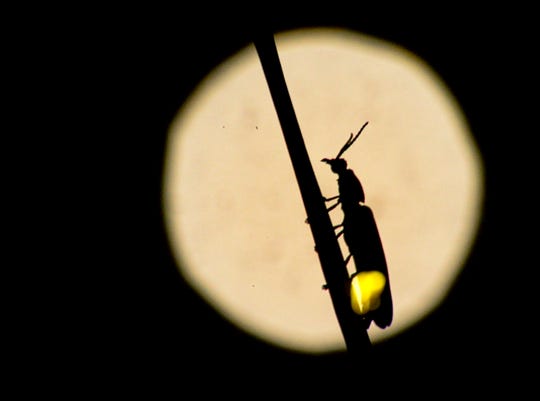Fireflies are dying out because people are destroying their habitats

By Dan Radel
31 July 2019
(Asbury Park Press) – Blink and you’ll miss one.
Collecting fireflies is a childhood memory that many of us share. Their glowing lights begin to appear in the twilight around the time school ends each year, signaling the start of summer vacation.
But is the fire going out?
Researchers and advocates say the insect is on the decline as more and more of its habitats are consumed by development, leaving it fewer marshes and meadows to illuminate.
Its struggle is further compounded by light pollution, pesticides and weed killers.
“If fireflies are disappearing that means we’re losing a lot more than fireflies. They can be an indicator of the quality of the wetlands. As the wetlands go, so go the fireflies” said Christopher Heckscher, an entomologist at Delaware State University.
Heckscher has been cataloging fireflies — or lightning bugs if you prefer — for over 20 years. He said the quantitative data isn’t there yet to express population decline in terms of numbers of the insect, which is part of the beetle family.
The empirical proof is beginning to mount, though.

Heckscher has hunted down rare fireflies and in 2004 even discovered a new species Photuris mysticalampa on the Delmarva Peninsula, but there is a handful of fireflies described by early 20th-century entomologists he can’t find.
“There was one in the Brandywine River watershed that was pretty common in the 1920s. I haven’t been able to find that one at all,” he said. […]
About a decade ago, researchers began to sound the night bell on the firefly’s plight. Ben Pfieffer, the founder of firefly.org and Texas-certified master naturalist, began to suspect fireflies were diminishing near his south Texas homeland in 2008.
His suspicions were confirmed when he was driving home one night and heard a blurb about firefly decline on an NPR broadcast.
“It’s not just about a decline in terms of numbers. There’s a whole lot less firefly diversity than there used to be,” said Pfeiffer. “Some of the species are habitat-specific and when that habitat is gone, the species can be lost.” [more]

